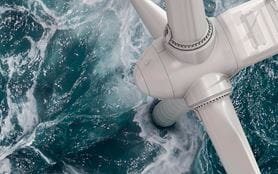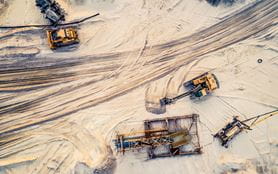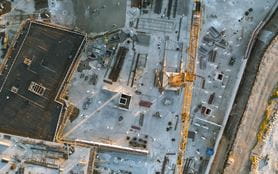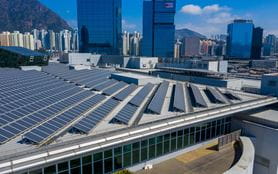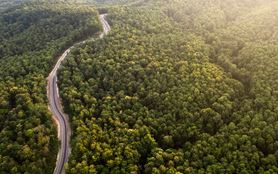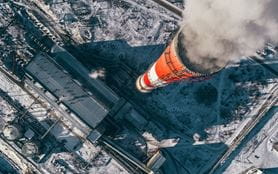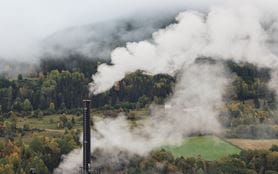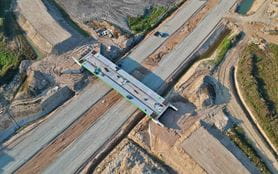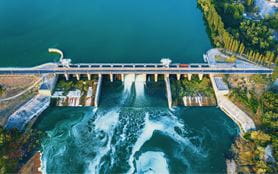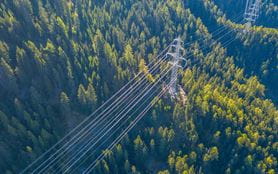How to increase investment in next generation nuclear power
Related people
Headlines in this article
Long-term contracts, price guarantees, direct state investment and the sharing of construction-phase risks are all options for governments looking to boost private funding of nuclear projects.
Few experts see a credible path to Net Zero without nuclear energy. New nuclear provides a reliable and plentiful supply of low-carbon power, which will be vital in a world increasingly reliant on variable sources.
But if nuclear power is to play a leading role in our future energy mix it will require huge upfront capital investment. Some jurisdictions will also need to adopt innovative technologies and shift public perception.
Governments have a critical role to play by incentivising the participation of private capital or, alternatively, directly funding new-build nuclear projects.
Creative financing vehicles required to unlock innovation
Where direct government funding is not possible or preferred, progressive regulation, accompanied by creative financing vehicles, will be vital to unlock innovation and drive the development of new infrastructure.
Small modular reactors require a lower capital outlay for generation capacity, which should be well-suited to support stable, efficient power grids alongside an uptick in renewable power.
The fourth generation of nuclear reactors, currently in development, may simplify the task. In particular, small modular reactors (SMRs) will require a lower capital outlay for generation capacity that should be, in principle, well-suited to combining with increasing levels of renewable generation to support stable and efficient power grids.
Generation IV reactors de-risk project development
Many Generation IV reactors promise additional efficiencies and cost savings, largely through a design which allows much of the construction to be completed in a factory before being shipped to its operating location.
This de-risking of the project development phase should, once proven, help to overcome financial barriers to investment in nuclear projects and therefore support broader adoption.
Despite its promise, Generation IV projects remain in early-stage development, and funding any type of nuclear project has never been easy. Traditional plants require significant capital investment and can take around a decade to complete.
Governments must allay public concerns
Then there is the further challenge of public concern over the perceived risks of nuclear power, which remains strong in many countries.
Memories of Chernobyl and Fukushima – supported by pop culture re-imaginings (including the excellent HBO drama on Chernobyl) – continue to pose a barrier to development in some jurisdictions, notwithstanding that the practical risk from nuclear power is extremely limited.
Against this backdrop, it is no surprise that most of the new nuclear supply that has been introduced over the past 10 years has been in China, where state-owned companies implement central decisions.
Energy crisis prompts policy rethink
However, there is strong evidence of renewed interest in nuclear energy, triggered by the growing urgency of the climate crisis, the war in Ukraine, improved construction techniques for Generation III projects and the promised technological advances of Generation IV reactors.
Indeed, both Germany and Belgium – which had planned to phase out nuclear power by 2022 and 2025 respectively – are reviewing their policies.
Some governments have started sharing R&D expenses on fourth generation projects, while others are designing commercial and regulatory frameworks to encourage investment.
Among countries with existing nuclear power fleets, the change in attitude is most obvious in Japan, where Prime Minister Fumio Kishida has signalled a policy rethink. A decade on from the Fukushima disaster, Japan is bringing idle plants back online, prolonging the operational life of existing reactors and recommitting to developing new reactor technology.
Similarly, South Korea has moved to expand its nuclear power investment by restarting construction on two domestic nuclear projects and setting a target for nuclear power to provide a minimum of 30% of the nations electricity by 2030. The government in Seoul is also increasing the activity of its state-owned companies in foreign nuclear schemes, including in Poland, Saudi Arabia and the Czech Republic.
States share cost of new project developments
Around the world, some governments have started sharing R&D expenses on fourth generation projects. The UK recently announced £120m of funding to support the development of new nuclear energy projects, while a similar scheme in South Korea has pledged $100m.
Other countries are going further, designing regulatory and commercial frameworks that encourage investment as well as introducing revenue support measures such as long-term contracts and price guarantees.
EU set to include nuclear in green taxonomy
Nuclear energy also looks set to be included in the EU Taxonomy, the European Union’s list of officially approved “green” investments, although this may be subject to legal challenge.
Assuming this policy stands, this characterisation will allow significant pools of capital to invest in nuclear power which would not otherwise be the case.
In parallel, financial incentives offered in countries seeking private sector investment in new-build nuclear might include a combination of long-term contracts, price guarantees, direct state investment and, critically, the sharing of construction-phase risk, which is typically viewed as a major impediment to mobilising any form of private capital.
This more positive mood around nuclear power is driving renewed interest from corporates. Established players, such as EDF and Rolls Royce, are being joined by new entrants in both the roll-out of third generation and the development of fourth generation technology to provide power to national grids.
TerraPower, backed by the Bill and Melinda Gates Foundation, has specific, long-term social and environmental aims and is now involved in the development of an experimental reactor project in Idaho.
Still, Generation IV is largely untested. What we can say with certainty is that nuclear power is again at the forefront of discussions around energy security and climate change – and that is a big step forward.



